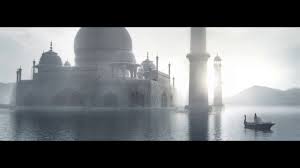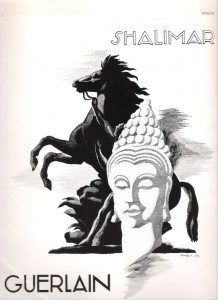La Légende de Shalimar
This past week, the folks over at Guerlain/LVMH released the most stunning marketing piece for one of its most iconic perfumes: Shalimar. The mini-film (here), produced by the uber-talented French filmmaker Bruno Aveillan (who produced a similar piece for Cartier), makes real the tale behind the fragrance: the love story between Shah Jahan and Mumtaz Mahal.
While there can be no argument that the imagery is stunning and will certainly draw attention to the fragrance and the once mighty house of Guerlain, I could not help but watch the film with a sense of irony and regret. I have posted here about my difficulties with Shalimar in its modern version. I find the modern Shalimar to be aggressive, brash and scratchy, while the original possessed the warmth and depth of liquid gold. While re-formulation of fragrances and the unavailability of important materials certainly plays a role in the current state of perfumery, there can be no denying the fact that the quality of materials has decreased in many of our favorite fragrances.
This factor is exacerbated by the ever-increasing marketing budgets that must be justified, often at the expense of the underlying product. In fact, the cost of the materials in a perfume is often only a few dollars, while the majority of the expense put into producing a bottle of fragrance is in fact that of the marketing machine. How then can we interpret the fate of Shalimar and indeed the house of Guerlain? Production costs for the movie were rumored to be in excess of $45 million. Given the current state of Shalimar, this can only mean two things in my opinion: 1) either Guerlain/LVMH is aware that the fragrance in its current form is not up to par and needs marketing assistance if it is going to survive and seduce future generations or 2) another re-formulation or decrease in quality lies ahead.
The greatest irony of the release is that Shah Jahan built the Taj Mahal upon Mumtaz Mahal’s death, so the beautiful monument commemorated in the film is actually a memorial to the dead. Perhaps then this monumental film also commemorates the death of the beloved, in this case, the beauty and splendour of the original Shalimar. For my part, I would prefer advertising along the lines of this 1933 image below, if it meant that funds would be expended where they should: to restore the fragrance to its former, impossibly perfect, glory.


